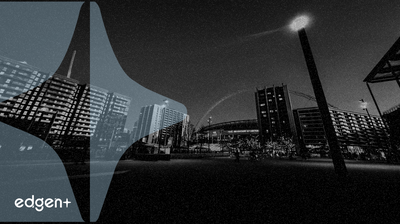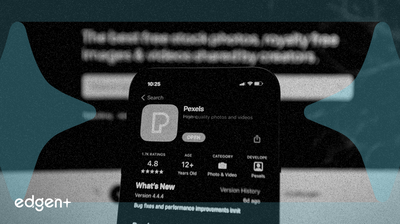Related News

Lista DAO Liquidity Pool Reaches 99% Utilization, Triggers Forced Liquidation
## Executive Summary On November 6, a liquidity pool on the **Lista DAO** platform, managed by **MEV Capital** and **Re7 Labs**, attained a 99% utilization rate, precipitating forced liquidations. This event underscores the inherent risks within decentralized finance protocols, particularly when high utilization thresholds are approached, leading to a community-approved activation of a forced liquidation mechanism. ## The Event in Detail Data from the on-chain analysis platform **Lookonchain** indicated that on November 6, the funds administered by **MEV Capital** and **Re7 Labs** within the **Lista DAO** ecosystem reached a critical utilization rate of 99%. This elevated usage directly triggered forced liquidations within the protocol. This incident prompted warnings for users engaged in decentralized finance (**DeFi**) protocols, as numerous platforms concurrently registered utilization rates exceeding 90%, signaling a heightened risk environment. ## Financial Mechanics and Protocol Response In response to the escalating utilization, **Lista DAO** announced the community's vote on the **LIP022** proposal, which garnered majority support for activating the **USDX** market forced liquidation mechanism. The protocol initiated the liquidation process with the cooperation of **Re7 Labs**, aiming to mitigate uncertainty and safeguard the protocol's integrity. A portion of the associated liquidation penalties will be automatically deducted from **Re7 Labs'** accounts and subsequently utilized to repurchase collateral after complete calculations. Any remaining positions not yet liquidated are designated for relocation to a public liquidation pool. Furthermore, **Lista DAO** proactively paused operations following abnormal price fluctuations of **$YUSD**, a key collateral asset, to prevent further liquidation risks and protect user funds, highlighting the critical role of stablecoin stability in DeFi protocols. ## Broader Market Implications The forced liquidations on **Lista DAO** occurred within a broader context of significant market volatility. Reports indicate that over **$1.36 billion** in crypto positions were liquidated across the market within a 24-hour period, affecting approximately 327,000 traders. **Bitcoin ($411M)** and **Ethereum ($355M)** comprised more than half of these total liquidations. Nearly 90% of these liquidations stemmed from long positions, suggesting a widespread flush-out of overly bullish market bets. Exchanges such as **Hyperliquid ($397M)**, **Bybit ($335M)**, and **Binance ($242M)** recorded the highest volumes of these liquidations. ## Expert Commentary Analysts and market observers advise extreme caution for users interacting with DeFi protocols, especially those exhibiting high utilization rates. The recent events underscore the potential for rapid losses and the necessity for robust risk management frameworks within these decentralized ecosystems. The proactive measures taken by **Lista DAO**, including the temporary operational pause, are cited as examples of necessary protocol vigilance in managing systemic risks associated with smart contract vulnerabilities and market dynamics.

Crypto Markets Exhibit Divergent Trends with ICP Surging and ZKsync Correcting
## Executive Summary The cryptocurrency market demonstrated diverse movements, with **Internet Computer (ICP)** experiencing a significant 28.29% surge, while **ZKsync (ZK)** recorded a 15.54% decline, alongside notable gains for **Tezos (XTZ)** and **Zcash (ZEC)**, and a downturn for **Pump.fun (PUMP)**. ## The Event in Detail **Internet Computer (ICP)** emerged as a leading performer, climbing by 28.29% to reach a price of $6.57. This daily increase contributed to a broader market capitalization growth of over $1 billion for ICP since the beginning of the month. **Tezos (XTZ)** also registered a substantial gain, increasing by 16.62% to $0.6238. **Zcash (ZEC)** advanced by 7.78% to $520.76, marking its first breach of the $500 psychological barrier since January 2018. This rally follows a 250% increase over the past month and an impressive 1,600% surge from its year-to-date low. Concurrently, Zcash's trading volume expanded from $560 million to over $1.75 billion, with shielded **ZEC** tokens now accounting for more than 30% of the total supply, valued at over $2.56 billion. In contrast, **ZKsync (ZK)** depreciated by 15.54% to $0.06753. This decline occurred after **ZK** previously surged by 150% in November, driven by renewed investor confidence and a 30-fold spike in trading volume. **Pump.fun (PUMP)** also saw a decrease, falling by 10.84% to $0.003756, positioned as a meme coin within the **Solana** ecosystem. ## Market Implications **ICP's** upward momentum is largely attributed to growing institutional interest and strategic technical updates from **DFINITY**, the foundation behind the protocol. Enhancements such as Caffeine AI and ICP 2.0 have reportedly improved the blockchain's speed, intelligence, and accessibility for developers and organizations. Industry observers, such as Erica Nister, suggest that significant investments, ranging from $20 million to $30 million, could enable large investors to acquire a 1% stake in what is termed the 'future Internet.' The high staking rate of approximately 50% of all **ICP** tokens further contributes to its market stability. The sustained rally in **Zcash** underscores a burgeoning demand for privacy-focused digital assets. The notable increase in shielded **ZEC** reflects a growing preference among users for enhanced transaction privacy. **ZKsync's** recent decline is widely interpreted as a short-term correction following its substantial 150% surge in November. This prior rally was fueled by factors including **Ethereum** co-founder Vitalik Buterin's endorsement of **ZKsync's** Atlas upgrade, which significantly enhances **Ethereum's** transaction speed and cost efficiency, and an early November trading volume exceeding $700 million. Analysts anticipate a healthy correction toward the $0.065 zone before a potential rebound, with some projecting a possible climb to $0.15. The ongoing monthly unlocking of 173 million **ZK** tokens, representing 34% of the total circulating supply, remains a factor influencing its price dynamics. ## Expert Commentary Analysts project a continued upward trajectory for **ICP**, with potential targets ranging from $10 to $16, signifying a possible 90% increase from current levels in an extended bullish scenario. For **ZKsync**, while a correction to the $0.065 zone is expected by analysts such as trader LaCryptoLycus, a subsequent climb of 135% to $0.15 is considered feasible. However, reclaiming its all-time high of $0.27 would require a further 250% increase. ## Broader Context The divergent performance among leading cryptocurrencies illustrates a mixed market sentiment. While certain assets like **ICP** and **ZEC** benefit from specific catalysts such as institutional adoption and privacy demands, others like **ZK** experience post-rally corrections. The broader landscape of digital assets continues to evolve, as highlighted by Standard Chartered CEO Bill Winters, who posited that nearly all global transactions will eventually leverage blockchain technology and all currencies will undergo digitization. This includes the potential for Hong Kong dollar stablecoins to facilitate cross-border digital trade. Winters also forecasts that the asset tokenization wave will instigate fundamental shifts in market structures, with projections for tokenized money market funds and publicly traded stocks to reach a market capitalization of $750 billion by 2028.

RedStone Launches Credora DeFi Risk Ratings Following $20 Billion Crypto Liquidations
## Executive Summary Modular oracle network RedStone has launched Credora, a decentralized finance (DeFi)-native risk ratings platform, aiming to enhance transparency and credit analytics for lending protocols following a recent $20 billion crypto market liquidation event. ## The Event in Detail RedStone, a modular oracle network, announced the launch of Credora, a DeFi-native risk ratings platform. This initiative seeks to introduce enhanced transparency and credit analytics to decentralized lending protocols. Credora by RedStone integrates directly with prominent DeFi lending markets, specifically **Morpho** and **Sparks**, to deliver dynamic risk scores and default-probability analytics. These analytics are accessible through a dedicated API, providing a structured approach to risk evaluation. The development of Credora follows RedStone's acquisition of Credora in September, which expanded its capabilities beyond traditional price feeds into broader credit, collateral, and risk intelligence. The platform consolidates creditworthiness data, default probabilities, and collateral analytics into a unified ratings layer. Notably, Credora's technology utilizes zero-knowledge proofs to facilitate secure credit ratings for over $1 billion in uncollateralized loans, ensuring data privacy while maintaining assessment integrity. RedStone co-founder Marcin Kaźmierczak stated that this launch represents a significant stride towards the "Low-Risk DeFi" movement, balancing yield generation with verifiable, data-driven transparency. ## Market Implications The introduction of Credora addresses a critical need for robust risk management within the DeFi ecosystem, particularly highlighted by a recent liquidation event where nearly $20 billion in crypto positions were wiped out across major exchanges like **Hyperliquid**, **Bybit**, and **Binance**. This event, described as a liquidity shock, exposed structural fragilities in crypto markets. Credora aims to mitigate such risks by providing granular insights, enabling users to compare vault and loan positions on platforms like **Morpho** by relative risk scores. This increased transparency and standardized risk assessment are anticipated to attract greater institutional investment into DeFi. Company data cited by RedStone indicates that DeFi strategies carrying a rating, such as **Morpho Vaults**, have experienced up to 25% faster growth compared to unrated counterparts, suggesting strong user demand for dependable risk signals. The integration plans include re-launching public ratings and shipping API integrations to propagate risk scores through RedStone's oracle feeds to protocols already utilizing its services. ## Expert Commentary Marcin Kaźmierczak, co-founder of RedStone, emphasized the platform's role in advancing the "Low-Risk DeFi" movement, stressing the importance of combining yield generation with verifiable, data-driven transparency. Darshan Vaidya, CEO and Co-founder of Credora, highlighted that while DeFi has innovated capital allocation, clear and reliable risk information has often been lacking for users. Credora's objective is to democratize institutional-grade risk analysis, making it accessible to individual DeFi participants. ## Broader Context RedStone's acquisition of Credora, a platform backed by notable entities such as **Coinbase Ventures**, **S&P**, and **HashKey**, signifies a strategic expansion into comprehensive risk intelligence. This move positions Credora by RedStone as an oracle-powered risk-rating framework for assets and yield strategies across decentralized finance, mirroring the functions of traditional credit rating agencies. By providing a single pipeline for real-time prices and real-time risk, the combined entity aims to offer a holistic view of market conditions. The platform will extend expanded coverage across 100 **Morpho** vaults and introduce new metrics to assess key risks, including depeg events and liquidity, offering users a clearer understanding of how different vaults operate under various market conditions.
